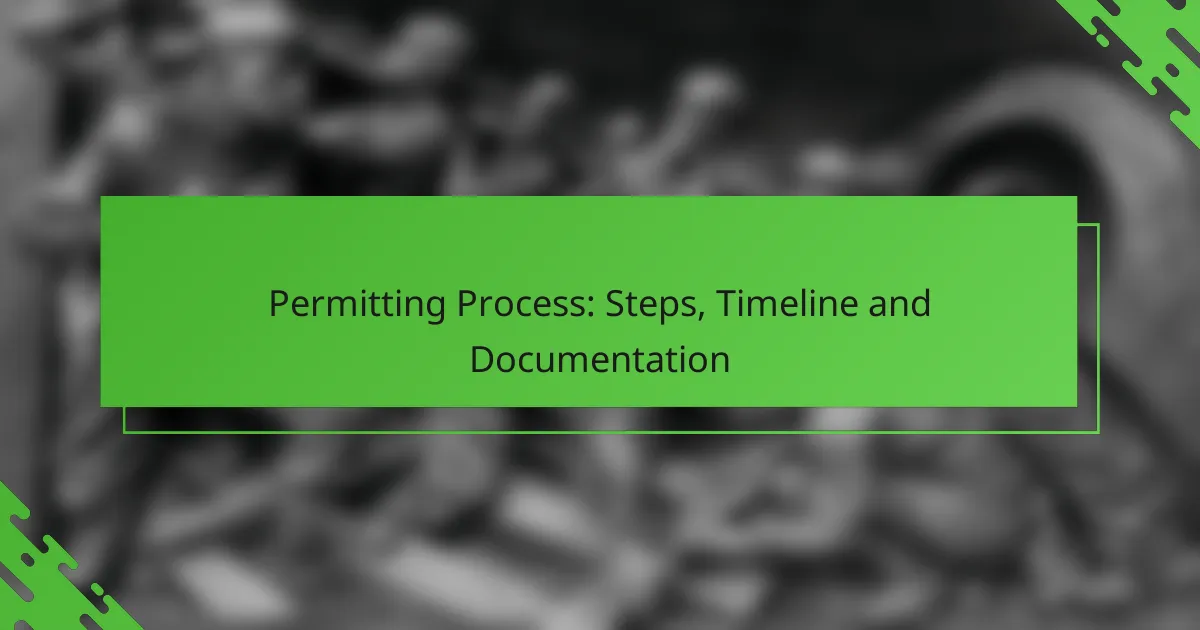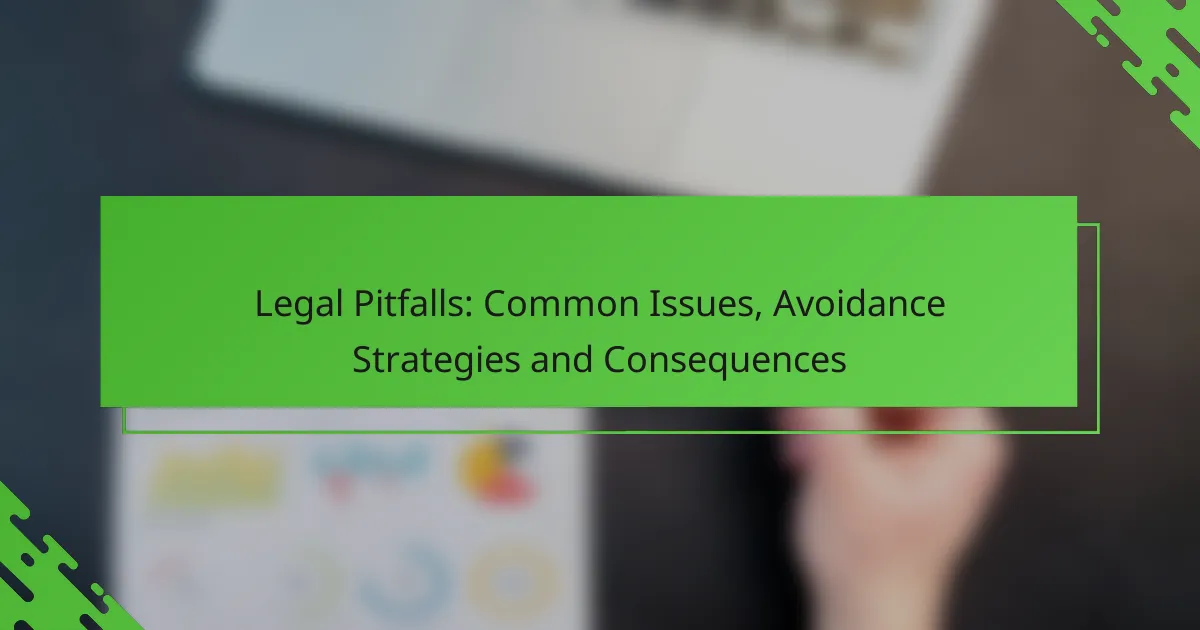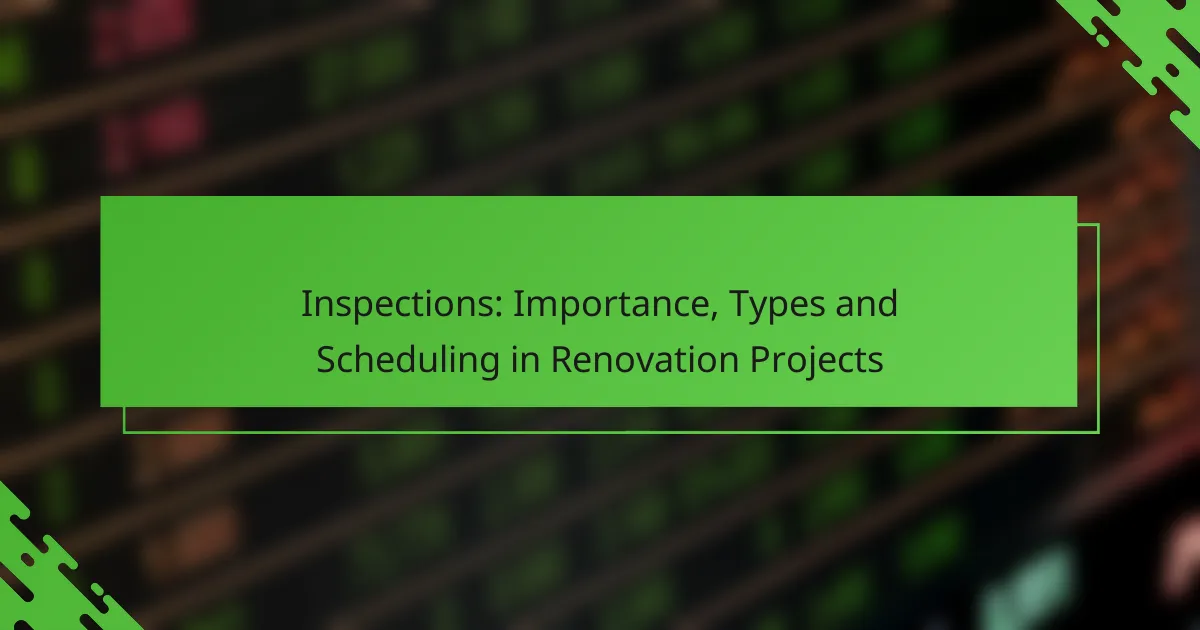The permitting process is a crucial series of steps designed to ensure that projects comply with local regulations and standards. By understanding the necessary steps, timeline, and required documentation, you can effectively navigate the process and minimize potential delays.
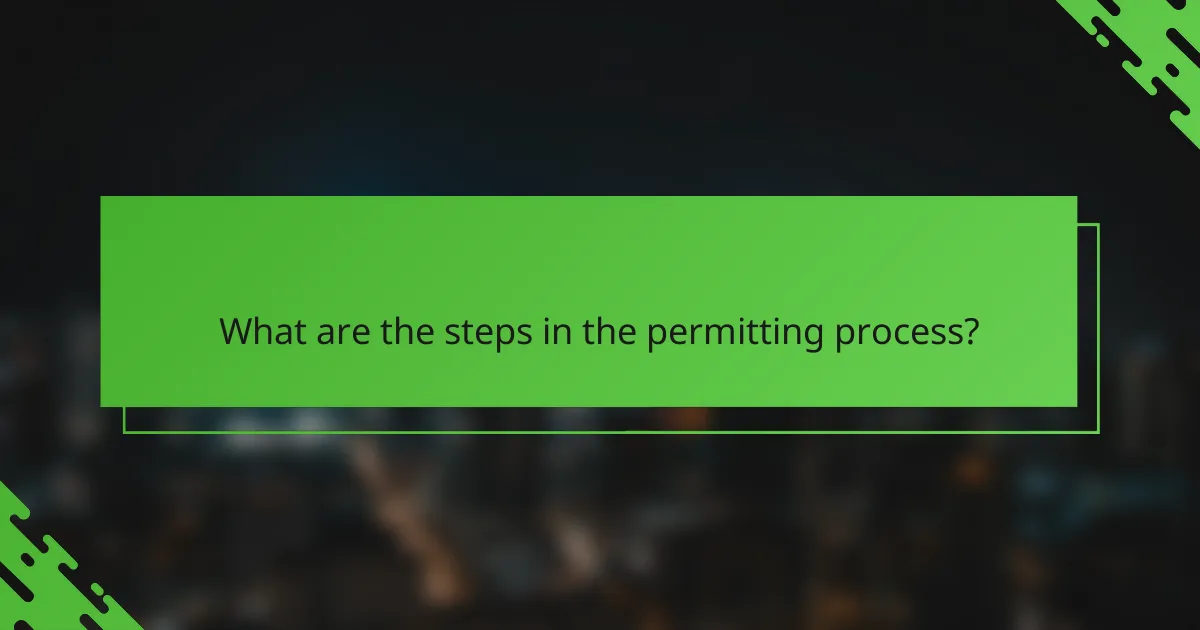
What are the steps in the permitting process?
The permitting process typically involves several key steps that ensure compliance with local regulations and standards. Understanding these steps can help streamline your project and avoid delays.
Application submission
The first step in the permitting process is submitting an application to the relevant authorities. This application usually includes detailed project plans, descriptions, and any required fees. Ensure all documentation is complete to prevent delays during the review phase.
Common documents required may include site plans, environmental assessments, and proof of ownership. Check with local regulations to confirm specific requirements for your area.
Review by authorities
Once submitted, the application undergoes a review by various authorities, which may include zoning boards, environmental agencies, and public safety departments. This review assesses compliance with local laws and regulations.
The review period can vary widely, often taking anywhere from a few weeks to several months, depending on the complexity of the project and the workload of the reviewing agencies. Be prepared to respond to any requests for additional information during this time.
Approval or denial
After the review, the authorities will issue a decision on your application, which can either be approval or denial. If approved, you will receive a permit that outlines any conditions or restrictions that must be followed.
If denied, you will typically receive a detailed explanation of the reasons for denial, allowing you to address the issues and reapply if necessary. Understanding these reasons can help improve your chances in future submissions.
Issuance of permit
Upon approval, the permit is formally issued, allowing you to proceed with your project. This document serves as legal permission to begin construction or other activities as outlined in your application.
Make sure to review the permit thoroughly for any conditions that must be adhered to, as failure to comply can result in fines or revocation of the permit.
Post-approval compliance
After obtaining the permit, ongoing compliance with its terms is crucial. This may involve inspections, reporting, and adherence to specific guidelines throughout the project duration.
Stay informed about any changes in local regulations that may affect your project. Regular communication with the permitting authorities can help ensure that you remain compliant and avoid any potential issues down the line.
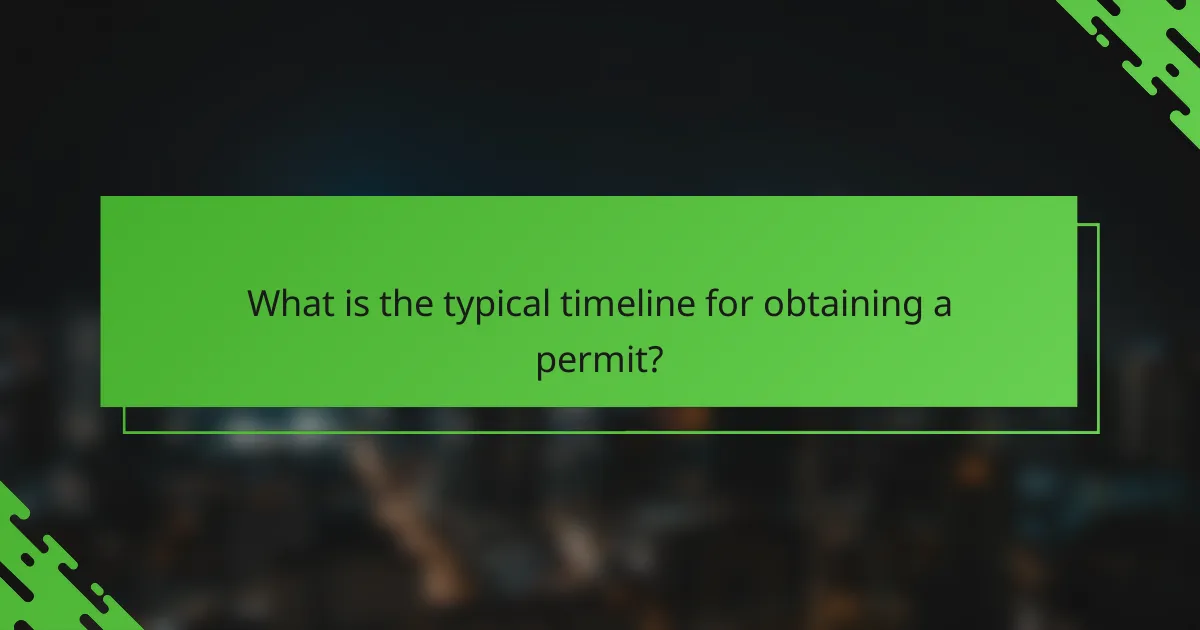
What is the typical timeline for obtaining a permit?
The timeline for obtaining a permit can vary significantly based on the type of permit, the jurisdiction, and the complexity of the project. Generally, the process can take anywhere from a few weeks to several months, depending on various factors involved in the permitting process.
Initial application review duration
The initial application review typically lasts from a few days to several weeks. During this phase, the permitting authority assesses the completeness of the application and ensures that all required documents are submitted. Delays can occur if additional information is needed or if the application is deemed incomplete.
To expedite this process, applicants should ensure that all required documentation is accurate and complete before submission. This includes site plans, environmental assessments, and any necessary fees.
Time for public comments
The public comment period usually spans from two to four weeks, allowing community members to review and provide feedback on the proposed project. This step is crucial for projects that may impact local residents or the environment.
Applicants should be prepared to address any concerns raised during this period, as public opposition can lead to delays or modifications in the project. Engaging with the community early on can help mitigate potential issues.
Final decision timeframe
The timeframe for a final decision can range from a few weeks to several months after the public comment period closes. This duration depends on the complexity of the project and the volume of comments received. The permitting authority will consider all feedback before making a final ruling.
To avoid unnecessary delays, applicants should follow up with the permitting authority to ensure that all requirements are met and to stay informed about the status of their application. Understanding local regulations can also help streamline this final decision process.

What documentation is required for the permitting process?
The permitting process typically requires several key documents to ensure compliance with local regulations. These documents provide essential information about the proposed project and its potential impacts.
Completed application forms
Application forms are the foundational documents for the permitting process. They usually require detailed information about the project, including its scope, location, and intended use.
Ensure that all sections of the forms are filled out accurately to avoid delays. Missing or incorrect information can lead to rejection or requests for additional documentation.
Site plans and drawings
Site plans and drawings visually represent the proposed project and its surroundings. These documents should include dimensions, property lines, and the layout of structures and utilities.
High-quality, detailed drawings help reviewers understand the project’s impact on the site and surrounding area. Consider hiring a professional to create these documents to ensure compliance with local standards.
Environmental assessments
Environmental assessments evaluate the potential impacts of the project on the environment. Depending on the project’s scale, this may include studies on air quality, water resources, and wildlife.
Submitting a thorough environmental assessment can expedite the permitting process. Be prepared to address any concerns raised by regulatory agencies regarding environmental impacts.
Proof of ownership
Proof of ownership is necessary to confirm that the applicant has the legal right to develop the property. This may include deeds, titles, or other legal documents.
Ensure that the documentation is current and clearly establishes ownership. If the property is leased, include lease agreements that grant permission for the proposed project.
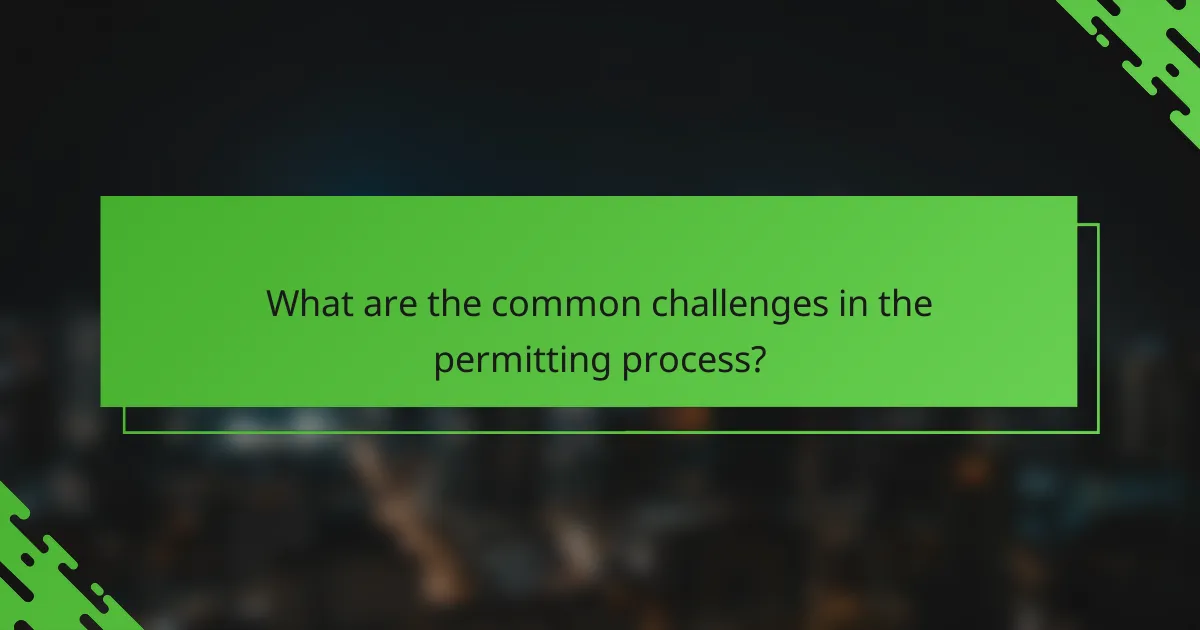
What are the common challenges in the permitting process?
The permitting process often faces several challenges that can delay project timelines and increase costs. Key issues include delays in review, incomplete applications, and public opposition, each of which can significantly impact the overall efficiency of obtaining necessary permits.
Delays in review
Delays in the review process can occur due to various factors, including high volumes of applications and limited resources within permitting agencies. These delays can extend the timeline for project approval, sometimes by several months or even years.
To mitigate delays, applicants should ensure that their submissions are thorough and comply with all local regulations. Engaging with the permitting agency early in the process can also help identify potential bottlenecks and streamline the review timeline.
Incomplete applications
Incomplete applications are a common pitfall that can lead to significant delays. Missing documents or insufficient information can result in requests for additional data, prolonging the approval process.
To avoid this issue, applicants should carefully review the application requirements and checklists provided by the permitting authority. Submitting a complete application upfront can save time and reduce frustration during the review process.
Public opposition
Public opposition can pose a substantial challenge in the permitting process, particularly for projects that may impact local communities or the environment. Concerns from residents can lead to increased scrutiny and additional requirements for public hearings or environmental assessments.
To address public opposition, it is beneficial for applicants to engage with the community early on. Providing clear information about the project and addressing potential concerns can help build support and facilitate a smoother permitting process.
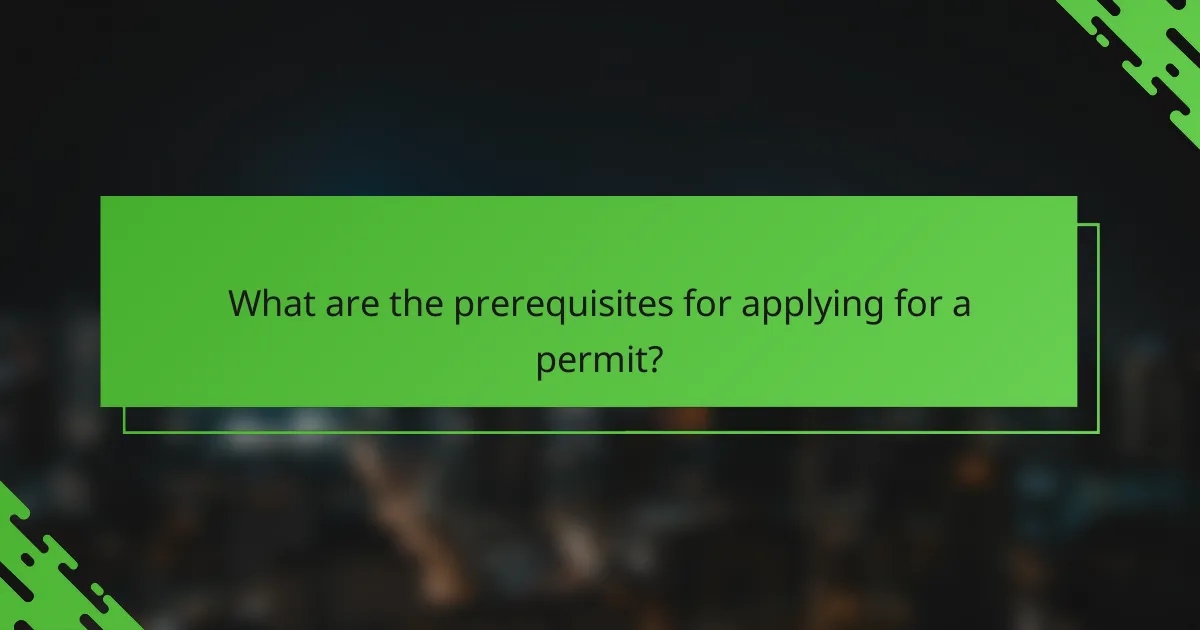
What are the prerequisites for applying for a permit?
Before applying for a permit, applicants typically need to meet specific prerequisites that can vary by jurisdiction. These may include having a clear project plan, necessary documentation, and compliance with local regulations.
Documentation Requirements
Documentation is a critical part of the permitting process. Applicants usually need to submit forms that outline the project details, environmental impact assessments, and proof of ownership or rights to the property. Depending on the type of permit, additional documents like engineering plans or surveys may also be required.
Project Plans
A comprehensive project plan is essential for a successful permit application. This plan should detail the scope of work, timelines, and any potential impacts on the surrounding area. Including visual aids, such as maps or diagrams, can help clarify the project’s intent and facilitate the review process.
Compliance with Local Regulations
Ensuring compliance with local regulations is crucial when applying for a permit. Applicants should familiarize themselves with zoning laws, building codes, and environmental regulations that may affect their project. Consulting with local authorities or legal experts can help navigate these requirements effectively.
